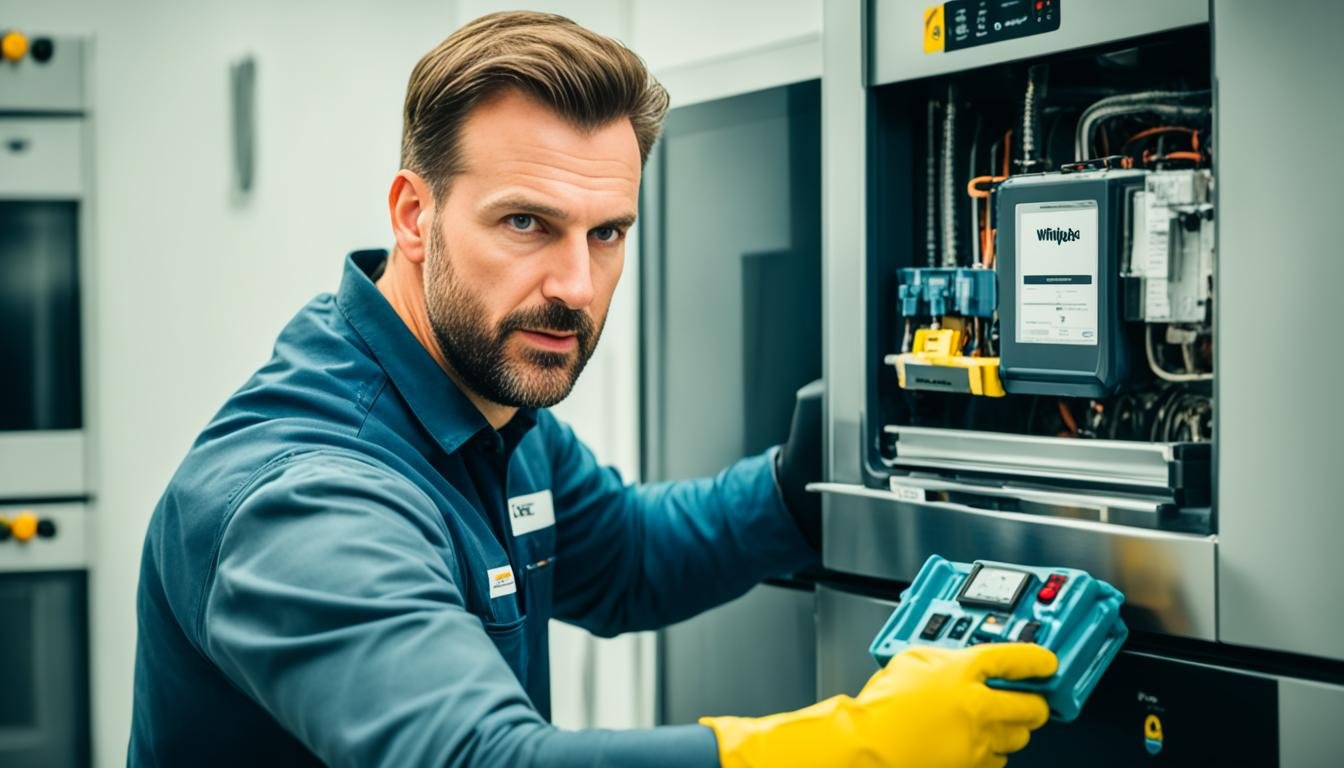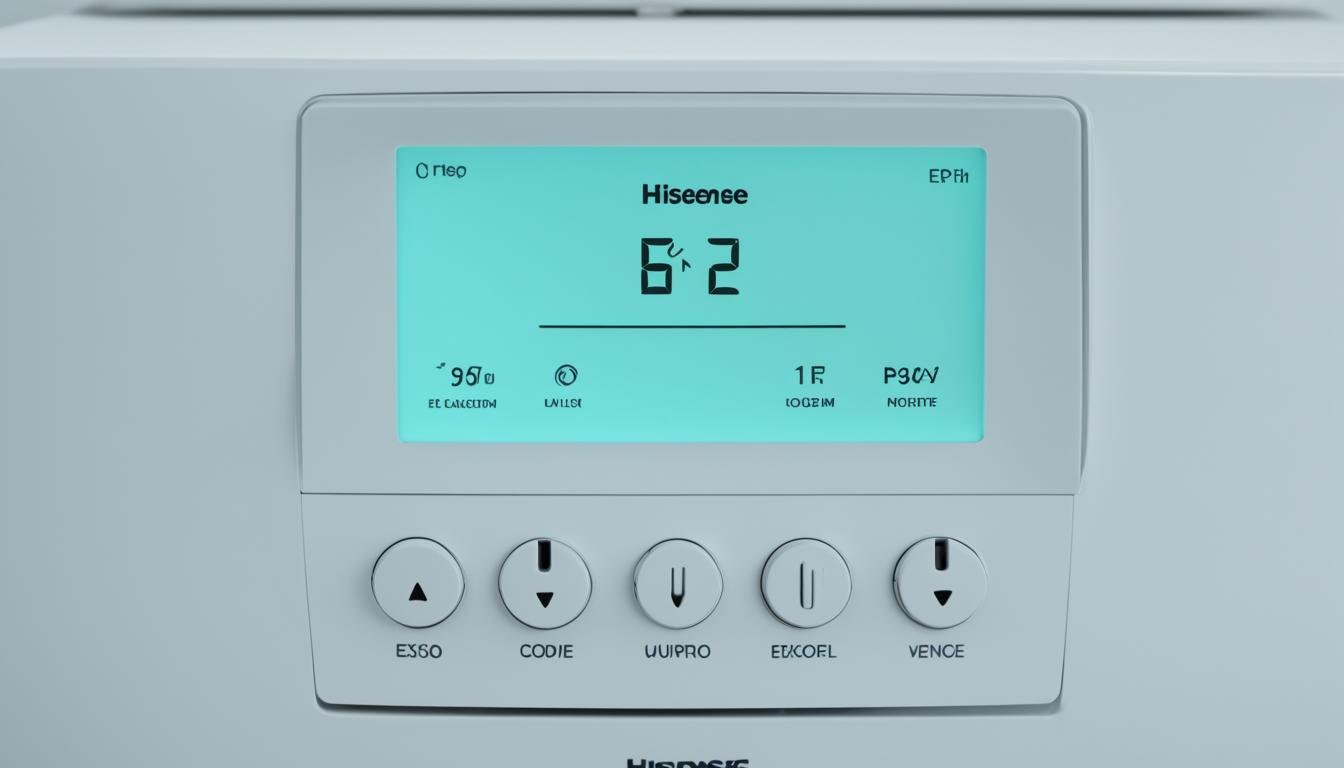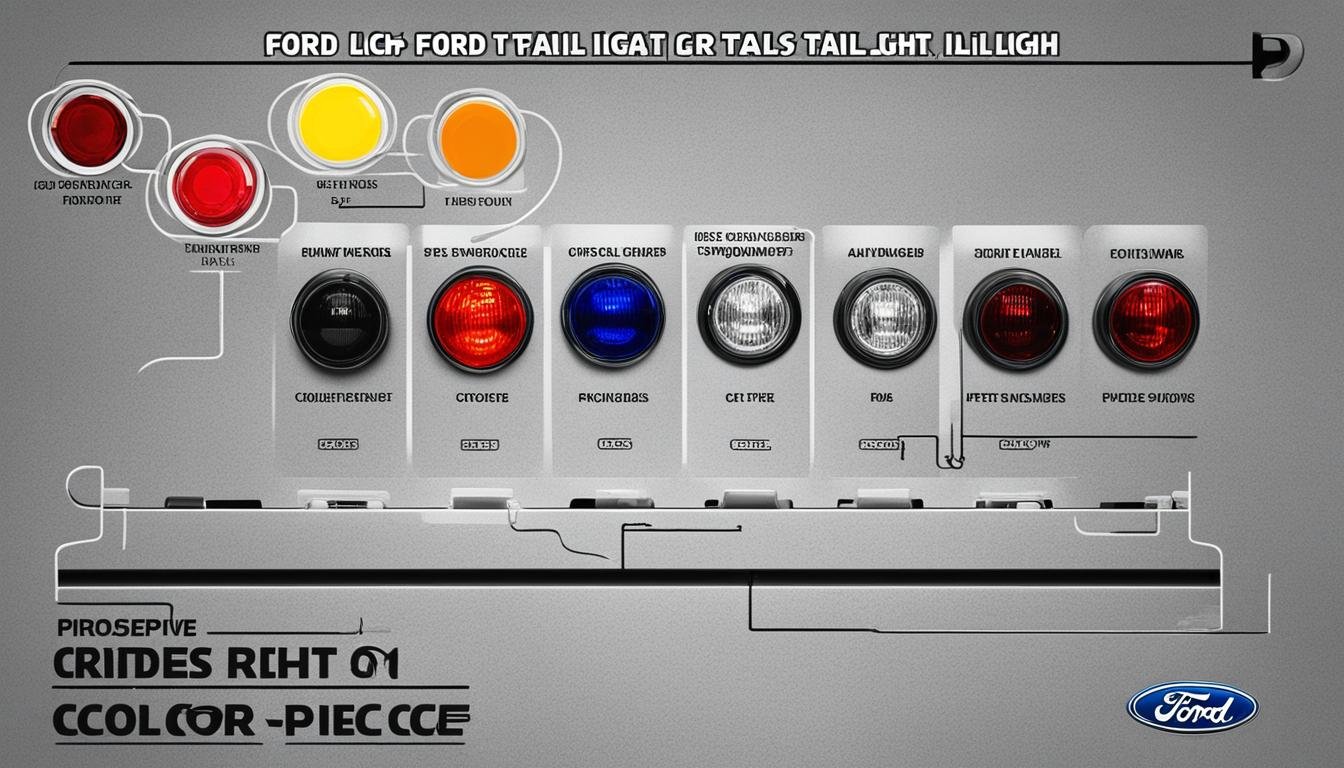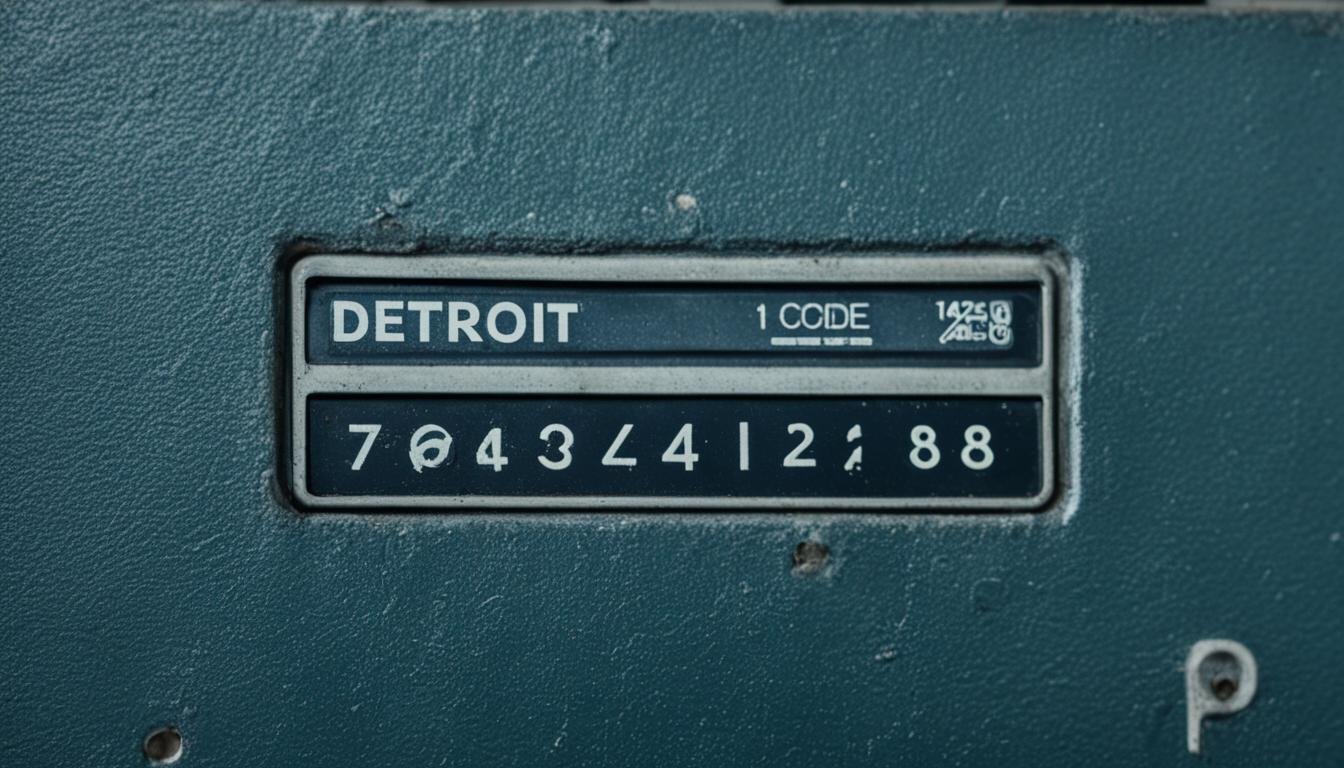Are you facing the frustrating E1 error code on your Whirlpool dishwasher? Don’t worry, we’ve got you covered! In this article, we will provide you with a comprehensive troubleshooting guide to help you resolve the E1 error code and get your dishwasher back up and running smoothly.
But first, let’s understand what the E1 error code means. When your Whirlpool dishwasher displays the E1 error code, it indicates a problem with the drainage system. This error can be caused by various factors, including siphoning issues, closed water supply valves, restricted overfill protection floats, or control panel glitches.
Now, you might be wondering, how can I fix this error code on my own? Is it a simple DIY task or do I need professional help? Let’s find out together as we delve into the troubleshooting steps for resolving the E1 error code on your Whirlpool dishwasher.
Key Takeaways:
- The E1 error code on your Whirlpool dishwasher indicates a problem with the drainage system.
- Potential causes for the E1 error code include siphoning issues, closed water supply valves, restricted overfill protection floats, or control panel glitches.
- Start by checking the drain hose, water supply valve, and overfill protection float for any issues.
- Troubleshoot further by cycling power to the dishwasher and seeking professional help if needed.
- Follow the troubleshooting steps in the subsequent sections to resolve the E1 error code on your Whirlpool dishwasher.
Common Causes of the E1 Error Code
The E1 error code on your Whirlpool dishwasher can be caused by various factors. It is important to identify and address these common causes to resolve the issue and prevent further disruptions to your appliance.
Here are the common causes of the E1 error code:
- Improper loading of dishes: Overloading the dishwasher or placing dishes in a way that obstructs the water spray arms can disrupt the drainage process and trigger the E1 error code.
- Using too much detergent or the wrong detergent: Excessive detergent or the use of non-HE (high-efficiency) detergents can lead to excessive suds, which impede proper drainage and result in the E1 error code.
- Leak in the door seal: A damaged or worn-out door seal can cause water leakage during the wash cycle, triggering the E1 error code. Inspect the door seal for any signs of damage, such as cracks or tears.
- Incorrect installation: Improper installation of the dishwasher can cause issues with the drainage system, leading to the E1 error code. Ensure that the dishwasher is correctly positioned and connected to the appropriate plumbing.
- Faulty sump motor: A malfunctioning sump motor can hinder proper water drainage and contribute to the E1 error code. This component may require professional diagnosis and replacement.
- Malfunctioning float switch: The float switch is responsible for monitoring the water level in the dishwasher. If this switch malfunctions, it can result in inaccurate water level detection and trigger the E1 error code.
- Leaking sump assembly: A leaking sump assembly can cause water to accumulate in the base of the dishwasher, leading to the E1 error code. Inspect the sump assembly for any leaks or cracks.
To determine the specific cause of the E1 error code, check if dishes are loaded correctly, use the appropriate detergent, inspect the door seal for any damage or leakage, and ensure that the dishwasher was installed properly. If none of these factors seem to be the issue, it is advisable to seek professional help for further diagnosis and repair.
| Causes | Symptoms | Resolution |
|---|---|---|
| Improper loading of dishes | Dishes obstructing water spray arms | Reposition dishes for unobstructed water flow |
| Using too much detergent or the wrong detergent | Excessive suds during wash cycle | Use appropriate amount and type of detergent |
| Leak in the door seal | Visible water leakage during wash cycle | Inspect and replace damaged door seal |
| Incorrect installation | Improper connection to plumbing | Ensure correct installation and connection |
| Faulty sump motor | Inadequate water drainage | Consult a professional for diagnosis and replacement |
| Malfunctioning float switch | Inaccurate water level detection | Professional repair or replacement may be necessary |
| Leaking sump assembly | Water accumulation in dishwasher base | Check for leaks and replace sump assembly if necessary |
Troubleshooting Steps for Resolving the E1 Error Code
If you are facing the troublesome E1 error code on your Whirlpool dishwasher, don’t worry. There are several effective troubleshooting steps you can take to resolve this issue.
First, ensure that the drain hose is correctly installed and free from any blockages. A clogged drain hose can prevent proper drainage and trigger the E1 error code. If needed, you can use a drain snake or a mixture of hot water, white vinegar, and baking soda to unclog the drain hose.
Next, double-check that you are using the appropriate detergent and avoid excessive suds. Using the wrong detergent or too much detergent can cause excessive foam and trigger the E1 error code. Stick to the recommended detergent for your dishwasher model and follow the manufacturer’s instructions for proper usage.
It is also important to inspect the dishwasher’s door for any leaks. A leaky door seal can interfere with the dishwasher’s functioning and lead to the E1 error code. If you notice any signs of leakage, such as water pooling around the dishwasher or a damaged door seal, consider replacing the door seal.
Lastly, make sure to load your dishes correctly according to the dishwasher’s instruction manual. Improper loading can disrupt the water distribution inside the dishwasher, resulting in the E1 error code. Follow the indicated guidelines for loading your dishes, ensuring they are properly spaced and not blocking the spray arms.
If following these troubleshooting steps does not resolve the E1 error code, it is advisable to seek assistance from a professional appliance repair service. They have the expertise to diagnose and fix any underlying issues that may be causing the error, ensuring your dishwasher returns to optimal performance.
FAQ
What does the E1 error code on my Whirlpool dishwasher indicate?
The E1 error code on your Whirlpool dishwasher indicates a problem with the drainage system.
What are some common causes of the E1 error code?
Some common causes of the E1 error code include siphoning issues, closed water supply valve, restricted overfill protection float, or control panel glitches.
How can I troubleshoot and resolve the E1 error code?
To resolve the E1 error code, you can check the drain hose, ensure the water supply valve is turned on, inspect the overfill protection float, or cycle power to the dishwasher. If the issue persists, it may require professional appliance repair.
What can trigger the E1 error code on a Whirlpool dishwasher?
Improper loading of dishes, using too much or the wrong detergent, a leak in the door seal, incorrect installation, a faulty sump motor, a malfunctioning float switch, or a leaking sump assembly can trigger the E1 error code.
How can I determine the cause of the E1 error code?
You can determine the cause of the E1 error code by checking the dish loading, using the appropriate detergent, inspecting the door seal, and ensuring proper installation. If the issue persists, professional help may be needed.
What troubleshooting steps can I take to resolve the E1 error code?
You can ensure the drain hose is properly installed, unclog any blockages, use the correct detergent, check for door leaks, and properly load dishes to avoid water distribution issues. If the error code continues, consult a professional appliance repair service for further assistance.






Leave a Reply